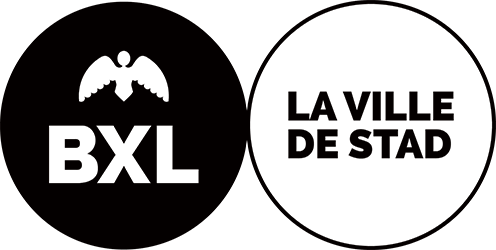Further information
-
assessment
Other (Evaluation Grid Document 1st year, 1st and 2nd semester Final evaluation form (E-exam, C-colloquium, LP-practical work) Evaluation forms and methods (percentage expression): - exam - 50 % - applicative activities/practical: seminars - 25 % - formative evaluation tests (test, report, essay, portfolio, project) - 25 % Formative evaluation tools (throughout the semester): [for course and applications/seminars] - Verbal observation and appreciation, evaluation test, oral examination, solfeggio and musical diction tests and exercises (melodic, harmonic, polyphonic) differentiated on structural and formative criteria, synthesis exercises and tests, musical analysis. Final evaluation tools: applied theory questionnaires and tests, verification by practical evaluation forms, first-sight solfeggio and complex and synthesis dictations. ) -
level
Advanced -
 Completed SemesterSemesters 1 to 6.
Completed SemesterSemesters 1 to 6. -
How many semesters does the course last?
6 semesters -
hours per week
100 minutes -
 Link of the course
Link of the course -
 Target group of courseOther (Students from the specialization „Music”)
Target group of courseOther (Students from the specialization „Music”) -
 credits30 credits per semester.
credits30 credits per semester. -
 Type of CourseSeminar
Type of CourseSeminar -
Degree Level
Bachelor -
 e-learning-elementsYoutube and aural training apps, such as Perfect Ear or The Ear Gym.
e-learning-elementsYoutube and aural training apps, such as Perfect Ear or The Ear Gym. -
Course
Mandatory -
students #
6-15 students -
Hours per year
56 hours -
BIBLIOGRAPHY
BIBLIOGRAFIE SEMINAR ASIST. UNIV. DR. LUCIAN CHERAN GIULEANU, Victor – Tratat de teoria muzicii, București, Editura Muzicală, 1986 RÎPĂ, Constantin – Teoria superioară a muzicii, vol. I - Sisteme tonale, Cluj-Napoca, Editura MediaMusica, 2001 RÎPĂ, Constantin – Teoria superioară a muzicii, vol. II - Ritmul, Cluj-Napoca, Editura MediaMusica, 2001 TERÉNYI, Ede – Armonia muzicii moderne (1900-1950), Cluj-Napoca, Editura MediaMusica, 2001 STONE, Kurt – Music Notation in the Twentieth Century, a Practical Guidebook, New York, W. W. Norton & Company, 1980 EDLUNG, Lars – Modus Novus, New York, Beekman Books Inc., 1990. DUȚICĂ, Gheorghe – Solfegiu, dicteu, analiză muzicală, Iași, Editura Artes, 2004 DUȚICĂ, Luminița – Teste de solfegiu și dicteu muzical, Iași, Editura Artes, 2010 DUȚICĂ, Luminița – Teoria muzicii în teste și chestionare, Iași, Editura Artes, 2013 BUCESCU, Iulia – Metodă de solfegii, dictări melodice, Iași, C. P. E. Loreley, 1996 BUCESCU, Iulia – Teoria muzicii, îndrumar metodic pentru admiterea în Conservator, Bacău, Editura Corgal Press, 1998 BUCESCU, Iulia și CRĂINICEANU, Dumitru – Teoria muzicii, Metodă de studiu autodidact, Ploiești, Editura LiberArt, 1994 GIULEANU, Victor și IUȘCEANU, Victor – Dicteuri melodice, București, Editura Muzicală Grafoart, 2019 IUȘCEANU, Victor – Solfegii, vol. II și III, București, Editura Muzicală Grafoart, 2013 DUMITRESCU, Ion – 120 de solfegii de grad superior, vol. I și vol. II, București, Editura Muzicală Grafoart, 2012 CHIȚU, Ciprian-Gabriel – 101 de solfegii tonale (ghid de studiu), Iași, Editura Artes, 2017 NEDELCUȚ, Nelida și RÎPĂ, CONSTANTIN – Solfegiu pentru toți, vol. I și II, Oradea, Editura Institutului Biblic „Emanuel”, 1998 ***, Solfegii, Dictee, Teste Teoretice de Teoria Muzicii, Iași, Editura Pim, 2017 TĂNĂSESCU, Andrei – 50 Solfegii modale și seriale, București, Editura Muzicală, 2006 GALLON, Noël – Cours complet de Dictée Musicale, Dictées harmoniques graduées à 2, 3 et 4 parties, Paris, Editions Jobert, 2007 GALLON, Noël - Cours complet de Dictée Musicale, 100 dictées musicales progressives à deux parties : faciles à très difficiles, Paris, Editions Jobert, 1996 MĂZĂREANU, Ion – 200 de Solfegii modale, București, Editura Litera, 1980 -
ONLINE CATALOGUE
WITH CONTENTS -
evaluation grid
-
evaluation grid
and document
Teacher(s)
Lucian Cheran
current position
Assistant Professor
Institution
National University of Arts George Enescu IASI
Be a part of our european project !
This European project (KA 203 Strategic Partnership) created by Salvatore Gioveni promotes cross-border collaboration in the field of Music Theory through sharing knowledge and transferring pedagogical innovation. It thus responds to a lack of centralised source and framework to deepen reflection by means of cross-disciplinary study at European and international level.
There is a significant wealth of educational practices from one country to another in this sector, especially in terms of harmonic musical notation and analysis. However, HMEI's are facing the nonexistence of a European network for pedagogical staff in Music Theory so far. To improve the situation, the project will among other things develop several intellectual outputs such as Online Platform (IO 1), an EU Bibliography (IO 2), a Repository Courses (IO 3), a Multilingual Glossary (IO 4) and an Exchange Online Learning Platform.
Besides the Conservatoire royal de Bruxelles as leader and manager of the project, the following partner institutions are involved: Music Academy S. Moniuszki Gdańsk (Gdańsk, Poland), F. Liszt Academy of Music Budapest (Budapest, Hungary), Estonian Academy for Music and Theatre (Tallinn, Estonia), HfMTh "Felix Mendelssohn Bartholdy" (Leipzig, Germany).
 | 2024
| 2024








